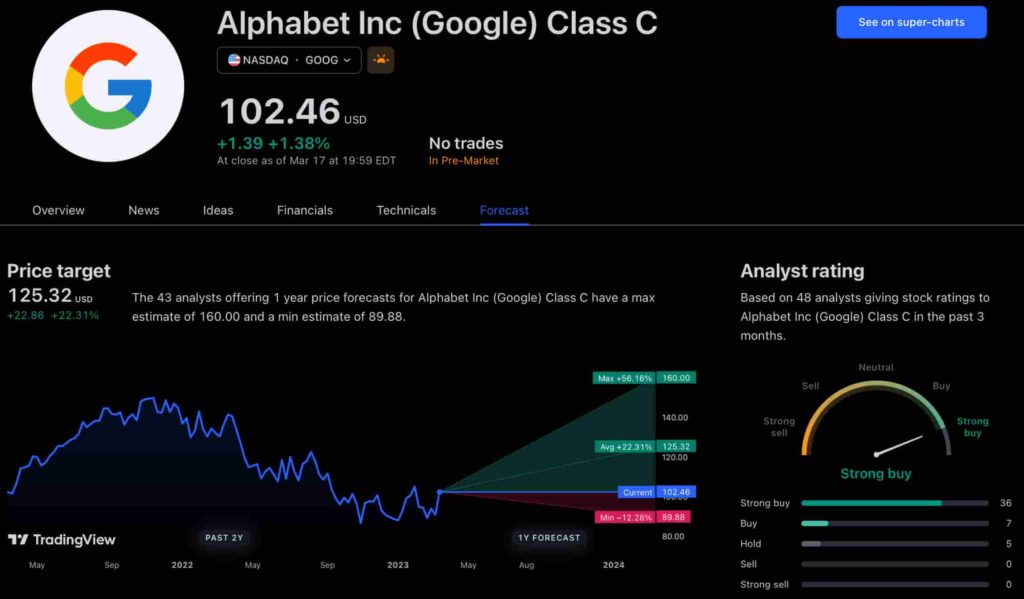The new app is called watchGPT and as I tipped off already, it gives you access to ChatGPT from your Apple Watch. Now the $10,000 question (or more accurately the $3.99 question, as that is the one-time cost of the app) is why having ChatGPT on your wrist is remotely necessary, so let’s dive into what exactly the app can do.
NEWS
Research Exposes Role of Pricing on User Ratings

A new study from the Harvard Business School proposes that price increases may have a negative effect on consumer ratings. This effect is seen in both high end and lower end of the market. This suggests that price can affect consumer perception of reputation on consumer rating platforms.
About the Study
A caveat to this study is that it’s a working paper. That means it is currently in draft form and not finalized. Nevertheless, the findings add to our understanding of pricing strategy and creating a positive reputation with consumers.
This research was conducted on restaurants on the Yelp Transactions Platform in the cities of New York City, Los Angeles, and Houston. They also used data from 2013 through January 2019.
Price and Ratings Effect is Across the Board
The researchers discovered that the average star ratings for high end restaurants were similar to the average ratings of low end restaurants. High end restaurants received an average score of 3.6 while restaurants at the cheapest levels received an average score of 3.4.
One would normally thing that high end restaurants would receive higher ratings in general than cheaper restaurants because of the perception of higher quality. But that doesn’t seem to be the case.
The researchers suggest:
“We interpret this as suggestive evidence that ratings area function of both quality and price.”
That means that a cheaper restaurant that has a four star rating isn’t necessarily better than a high end restaurant with a three star rating.
The rating is a reflection of the perceived quality for the price paid.
The Takeaway:
What this may mean to businesses is that there may be a relationship between the perception of value a customer receives for the price paid and that the value will be reflected in higher ratings if the ratio of value and price are favorable.
Price Increases May Affect Ratings
According to the research, it was discovered that price increases led to decreases in ratings.
This is how they described the effect:
“…we find that increases in prices lead to lower ratings. A 1% increase in price leads to a 0.05-0.14 decrease in rating on a scale of 1 to 3 (the scale used for delivery
purchases), which is approximately 2.5%-5% decrease for the average feedback.This effect becomes increasingly important when considering that the average price change is about 3%-9%.”
The researchers stressed that the rating changes were not small changes but were significant to the point that they could have an effect on a businesses reputation.
According to the research:
“These results are consistent with the cross-sectional evidence, and suggest that higher prices are in fact affecting a restaurant’s reputation, and that these effects are both statistically and economically significant.”
Why Ratings May Be Affected by Price
The research reviewed the data by splitting the consumer ratings between first-time buyers and longtime patrons.
What was discovered is that consumers who have not previously purchased from the restaurant tended to be affected by higher prices than consumers who had purchased there before.
This implied that new consumers who don’t already have an opinion will more likely factor the higher price as part of their rating than a return customer who has eaten there before.
An additional insight is that, because return customers don’t lower their ratings because of price increases, it could mean that lower ratings are not given as “punishment” for raising the prices, since the ratings aren’t affected to the same degree as the ratings of new customers.
The researchers wrote:
“We argue that ratings are negatively affected by price-level because consumers adjust their feedback based on prices.
We find that the effect is larger and generally more statistically significant for users who are ordering from a restaurant for the first time relative to people who have ordered before.
This suggests that consumers indeed respond to price levels rather than use low ratings as punishment for raising prices.
This finding also supports the notion that prices are, to some extent, used as a reference point or a signal to set users expectations for quality, as users who have not previously ordered from that business are likely to have the least prior knowledge of quality.”
The Trap of High Prices and Low Ratings
For businesses, the researchers suggest that price increases can carry a negative effect. The increased price can impact sales volume and affect the business reputation through lower ratings.
For consumers, the researchers argue that this may cause a lower user experience since the company’s ratings may not accurately reflect their reputation with consumers, it may simply reflect their reputation with new consumers.
Or, the high ratings may reflect their historic popularity with customers that was gained at a lower price point.
The researchers also suggest that this information might be useful for sites that display user generated ratings, that it may be useful to device a way to show different ratings based on whether they were given by a new or repeat customer.
Presumably the rating of a repeat customer might more accurately reflect the true reputation of a company.
Here’s what the research paper says:
“Our results suggest a trade-off to increasing prices—in addition to reducing immediate sales, price increases harm firm reputation.
…If consumers are unable to unpack the impact of historic prices on rating, then this puts a wedge between true quality and firm’s reputation.”
Trade-off of Introductory Prices and Long Term Ratings
The researchers warned that unscrupulous sellers might try to game their ratings by initially offering low prices.
Because consumers take price into consideration of the value they receive, the lower price will positively affect the ratings and result in better ratings and more sales which in turn feeds into additional higher ratings.
The researchers feel that this low price/high ratings feedback loop could be negatively offset in the long run by lower ratings from offering the product at higher prices later on.
This is how they put it:
“…strategic sellers might be tempted to take advantage of misguided consumers by setting low introductory prices. Initial low prices can mechanically boost ratings and allow some firms to eventually take advantage of their good reputation by increasing sales and prices.
More generally, our results point to a trade-off —price increases don’t just reduce present demand, but can potentially harm future demand by decreasing firm reputation.
We expect this negative effect to attenuate as the number of reviews grows larger.”
Explanation are Elusive
The researchers stated that they discovered consistent cause and effect in ratings and price increases. But they admitted that they did not have the data to accurately to explain the role of expectations on ratings.
The research paper concluded:
Lastly, in this setting the mechanism driving the adverse impact of prices on ratings is somewhat unclear.
…Unfortunately, we are unable to fully disentangle these to mechanisms in our setting. We believe that the effect is driven by a mixture of these two forces: On the one hand, we do find that repeating users are affected by price, which implies that deviations from expectations are not the sole mechanism driving the results.
On the other hand, new consumers seem to be more affected, so expectations seem to play some role.”
The research paper, which is a working paper, brings up some interesting information that may be useful to businesses that are considering a pricing strategy and are concerned about user ratings on platforms. This is of particular concern local type businesses but also has implications for businesses whose products are rated by users on sites like Amazon.
Citation
Download the Report: The Impact of Price on Firm Reputation (PDF)
Facebook Faces Yet Another Outage: Platform Encounters Technical Issues Again

Uppdated: It seems that today’s issues with Facebook haven’t affected as many users as the last time. A smaller group of people appears to be impacted this time around, which is a relief compared to the larger incident before. Nevertheless, it’s still frustrating for those affected, and hopefully, the issues will be resolved soon by the Facebook team.
Facebook had another problem today (March 20, 2024). According to Downdetector, a website that shows when other websites are not working, many people had trouble using Facebook.
This isn’t the first time Facebook has had issues. Just a little while ago, there was another problem that stopped people from using the site. Today, when people tried to use Facebook, it didn’t work like it should. People couldn’t see their friends’ posts, and sometimes the website wouldn’t even load.
Downdetector, which watches out for problems on websites, showed that lots of people were having trouble with Facebook. People from all over the world said they couldn’t use the site, and they were not happy about it.
When websites like Facebook have problems, it affects a lot of people. It’s not just about not being able to see posts or chat with friends. It can also impact businesses that use Facebook to reach customers.
Since Facebook owns Messenger and Instagram, the problems with Facebook also meant that people had trouble using these apps. It made the situation even more frustrating for many users, who rely on these apps to stay connected with others.
During this recent problem, one thing is obvious: the internet is always changing, and even big websites like Facebook can have problems. While people wait for Facebook to fix the issue, it shows us how easily things online can go wrong. It’s a good reminder that we should have backup plans for staying connected online, just in case something like this happens again.
NEWS
We asked ChatGPT what will be Google (GOOG) stock price for 2030

Investors who have invested in Alphabet Inc. (NASDAQ: GOOG) stock have reaped significant benefits from the company’s robust financial performance over the last five years. Google’s dominance in the online advertising market has been a key driver of the company’s consistent revenue growth and impressive profit margins.
In addition, Google has expanded its operations into related fields such as cloud computing and artificial intelligence. These areas show great promise as future growth drivers, making them increasingly attractive to investors. Notably, Alphabet’s stock price has been rising due to investor interest in the company’s recent initiatives in the fast-developing field of artificial intelligence (AI), adding generative AI features to Gmail and Google Docs.
However, when it comes to predicting the future pricing of a corporation like Google, there are many factors to consider. With this in mind, Finbold turned to the artificial intelligence tool ChatGPT to suggest a likely pricing range for GOOG stock by 2030. Although the tool was unable to give a definitive price range, it did note the following:
“Over the long term, Google has a track record of strong financial performance and has shown an ability to adapt to changing market conditions. As such, it’s reasonable to expect that Google’s stock price may continue to appreciate over time.”
GOOG stock price prediction
While attempting to estimate the price range of future transactions, it is essential to consider a variety of measures in addition to the AI chat tool, which includes deep learning algorithms and stock market experts.
Finbold collected forecasts provided by CoinPriceForecast, a finance prediction tool that utilizes machine self-learning technology, to anticipate Google stock price by the end of 2030 to compare with ChatGPT’s projection.
According to the most recent long-term estimate, which Finbold obtained on March 20, the price of Google will rise beyond $200 in 2030 and touch $247 by the end of the year, which would indicate a 141% gain from today to the end of the year.
Google has been assigned a recommendation of ‘strong buy’ by the majority of analysts working on Wall Street for a more near-term time frame. Significantly, 36 analysts of the 48 have recommended a “strong buy,” while seven people have advocated a “buy.” The remaining five analysts had given a ‘hold’ rating.

The average price projection for Alphabet stock over the last three months has been $125.32; this objective represents a 22.31% upside from its current price. It’s interesting to note that the maximum price forecast for the next year is $160, representing a gain of 56.16% from the stock’s current price of $102.46.
While the outlook for Google stock may be positive, it’s important to keep in mind that some potential challenges and risks could impact its performance, including competition from ChatGPT itself, which could affect Google’s price.
Disclaimer: The content on this site should not be considered investment advice. Investing is speculative. When investing, your capital is at risk.
NEWS
This Apple Watch app brings ChatGPT to your wrist — here’s why you want it

ChatGPT feels like it is everywhere at the moment; the AI-powered tool is rapidly starting to feel like internet connected home devices where you are left wondering if your flower pot really needed Bluetooth. However, after hearing about a new Apple Watch app that brings ChatGPT to your favorite wrist computer, I’m actually convinced this one is worth checking out.
-

 PPC4 days ago
PPC4 days ago19 Best SEO Tools in 2024 (For Every Use Case)
-

 MARKETING7 days ago
MARKETING7 days agoWill Google Buy HubSpot? | Content Marketing Institute
-
SEARCHENGINES7 days ago
Daily Search Forum Recap: April 16, 2024
-

 SEO7 days ago
SEO7 days agoGoogle Clarifies Vacation Rental Structured Data
-

 MARKETING6 days ago
MARKETING6 days agoStreamlining Processes for Increased Efficiency and Results
-
SEARCHENGINES6 days ago
Daily Search Forum Recap: April 17, 2024
-

 SEO6 days ago
SEO6 days agoAn In-Depth Guide And Best Practices For Mobile SEO
-

 PPC6 days ago
PPC6 days ago97 Marvelous May Content Ideas for Blog Posts, Videos, & More














